The variety of vegetable crops is incredibly vast, and the beloved tomato is no exception. Tomatoes were cultivated by the Aztecs as early as 700 BC. In the modern world, there are around 10,000 types of tomatoes, categorized by stem height, ripening time, and culinary use.
Tomatoes are divided into short and tall varieties based on stem and bush height. In this article, we’ll focus on short varieties, their characteristics, and yield potential.
Table of contents
Advantages of Short-Stem Tomatoes
Short-stem tomatoes grow into compact bushes with thick, sturdy stems. These plants take up little space in greenhouses or open soil, don’t bend toward the ground, and don’t break. The bushes grow to a certain point and then stop.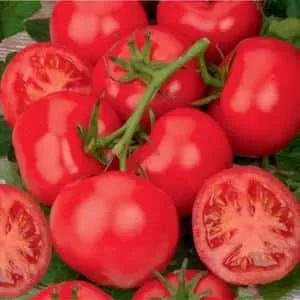
These bushes are easy to care for since their early growth stabilization eliminates the need for pruning side shoots. This saves significant time, as there’s no need to monitor and remove new growths.
Short-stem tomato bushes form 2–3 inflorescences. Their growth doesn’t take long, so all nutrients go into fruit production. The fruits appear quickly and ripen simultaneously.
In terms of taste and nutritional value, short-stem varieties are not inferior – and often surpass – their taller counterparts.
All determinate varieties are resistant to pests and adverse weather, making them hassle-free and ideal for beginner gardeners.
Important! Short-stem tomatoes don’t typically suffer from late blight, as it usually appears toward the end of summer.
Growing Tips and Yield
By following a few simple care rules, you can easily achieve a bountiful harvest. Below, we’ll explore the most productive short-stem tomato varieties.
After purchasing seeds, prepare them for planting. Soak the seeds for 30 minutes in a potassium permanganate solution (10 g per 500 ml of water), then place them on a damp cloth, cover with plastic wrap, and keep in a warm place. In 2–3 days, the seeds will sprout. Timing is crucial – if seedlings overgrow before transplanting, their growth may be stunted.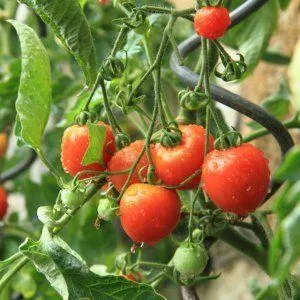
If germination is 100% and seedlings are too close together, transplant those with 2–3 leaves into separate cups or thin them out. This is called "pricking out."
Once seeds sprout, fill containers (e.g., plastic cups) with room-temperature soil. Seedlings should grow on a sunny windowsill for about 2 months. During growth, you can fertilize them 1–2 times with mineral supplements.
Transplant timing depends on the planting method (greenhouse or open soil) and your region. Typically, this is between March and April. In heated greenhouses, you can plant as early as February, but supplemental lighting is necessary.
When transplanting into a greenhouse, space plants 30–40 cm apart in a staggered pattern for easy access.
Note: Water seedlings generously before transplanting to avoid root damage.
Some short-stem varieties require staking. Despite their small size, heavy fruit loads can break stems.
Polycarbonate greenhouses are ideal. Before transplanting, wash greenhouse walls with soapy water and treat the soil with boiling water or potassium permanganate to kill pests.
Ensure the greenhouse has proper ventilation and lighting. Pre-till the soil with compost or well-rotted manure – fresh manure harbors fungi and pests.
Water only after seedlings establish roots. Water once a week (5–7 L per m²) in the morning or evening with settled water, avoiding leaves and stems.
Note: Mulch around stems with a 4–5 cm layer of straw to retain moisture.
Aerate soil after each watering to improve temperature and moisture balance.
Once the first fruits form, remove excess leaves to direct nutrients to the fruit rather than foliage.
Fertilize tomatoes 2–3 weeks after transplanting and again 10 days later. Use a solution of water, manure, and "Nitroammophoska."
Warning! Avoid nitrogen-rich fertilizers and organic matter during flowering and fruiting.
Open-field planting follows the same steps but adjusts for seasonal timing.
Once the first tomatoes ripen, you’ll be amazed at how prolific these small bushes are. Fruits mature uniformly and are juicy, flavorful, and aromatic.
Short-Stem Tomatoes for Greenhouses
Among short-stem varieties, some are better suited for greenhouses or open soil.
For greenhouses, consider Alaska, Enigma, Raja, Pink Honey, and Harlequin. Below are detailed descriptions.
Alaska
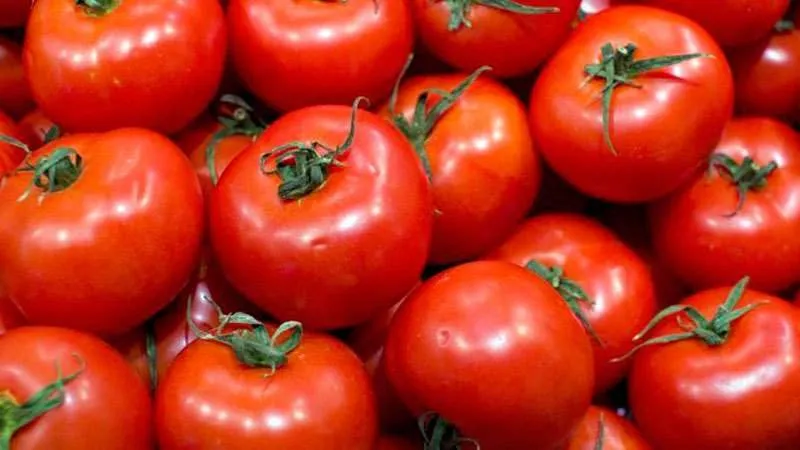
Alaska is a high-yield, early-maturing short-stem tomato. Fruits appear as early as June, ripening in 80–100 days. A standout feature is their rapid reddening and sweetness.
Bush height doesn’t exceed 0.5 m, classifying it as a dwarf variety. Its compact size helps it withstand harsh weather. Despite its height, staking is recommended to prevent stem breakage. No pruning is needed. Plant 6–7 bushes per m².
Yields are abundant (2 kg per bush), with fruits ripening quickly since the plant sets fruit even in cool temperatures – rare for tomatoes. This allows year-round balcony cultivation.
The moderately dense skin makes them ideal for both fresh eating and canning. They store and transport well.
Enigma
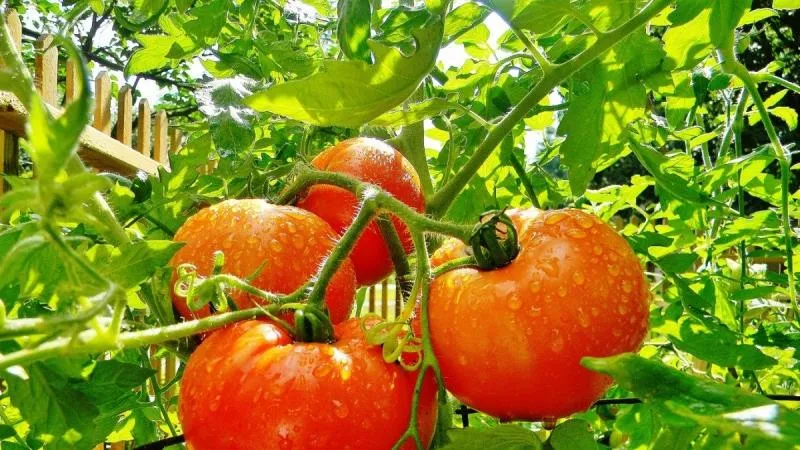
Enigma is a determinate (growth-limited) variety with a sturdy 60 cm stem. Compact bushes form their first cluster above the 5th–6th leaf, yielding 5–6 fruits.
Tomatoes are bright red, round, and slightly ribbed near the stem. Average weight: 112 g. The firm skin resists cracking, ensuring good shelf life and transportability. The flesh is meaty and flavorful.
Yields reach 22 kg/m², with first fruits ripening by early June. Low-maintenance.
Planting density: 6–8 bushes per m², spaced 35–40 cm apart in rows with 70–80 cm between rows. Optimal layout: two rows with a 70–80 cm pathway. Prepare 15–20 cm deep holes in advance.
Raja
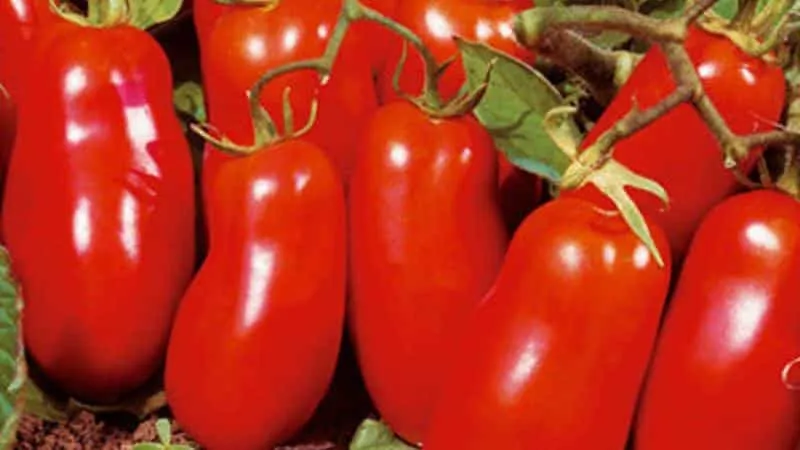
Raja is a short-stem, large-fruited tomato with glowing reviews.
Fruits are oval (not round), averaging 300 g. The sweet, meaty flesh has few seeds. Ideal for salads, canning, and sauces.
These tomatoes are visually striking in greenhouses, growing in large clusters of 5–7. Ripening time: 85–95 days. The robust, spreading bush reaches 1–1.5 m and requires shaping. High yield: 3–4 kg per plant. Resistant to fungi and viruses, eliminating need for preventive treatments.
Planting scheme: 60 cm between rows, 40 cm within rows. Overcrowding creates impenetrable thickets. Water in the evening, 2–3 hours before sunset. Avoid overwatering or drought.
Despite being short-stem, Raja requires pruning. After 5–7 fruit clusters form, pinch the top. Staking is essential within two weeks of transplanting to prevent sprawling.
Pink Honey
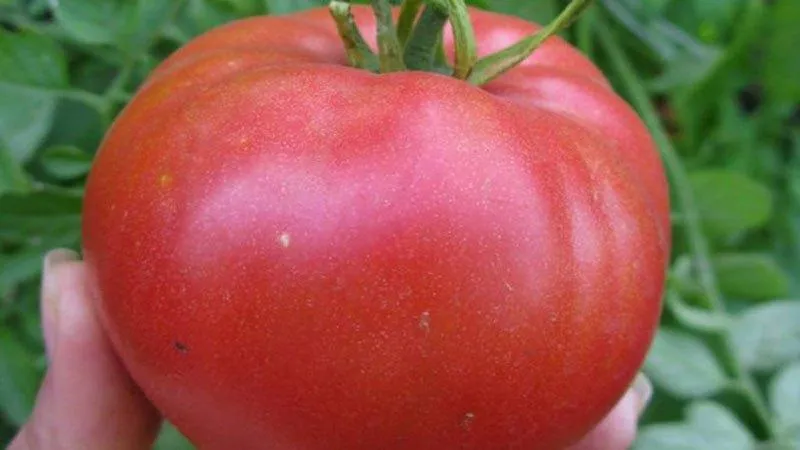
Pink Honey is a large-fruited determinate variety. Bush height: 60 cm – 1.4 m. Requires staking and pruning. Tolerates drought and adverse weather. Moderately disease-resistant.
Key trait: massive pink fruits (up to 1.5 kg) with multi-chambered, sugary flesh and no acidity. Heart-shaped and ribbed.
Recommended for temperate climates. Seeds from harvested fruit are viable for replanting. Ripening: 111–115 days. Start seeds in early March; harvest begins in August. Prune to two stems for more clusters.
Planting density: 50 × 40 cm (3–4 plants/m²). Yield: up to 6 kg per bush.
Each cluster bears 3–10 fruits. The first are largest (600–800 g), with thin skin prone to cracking. Poor shelf life and transportability. Best fresh. Use in salads, juices, pastes, ketchups, winter preserves, soups, or even jam.
Pink Honey is low-maintenance. Plant after cabbage, radishes, or onions to avoid nightshade diseases. Drought-tolerant; water twice weekly (deep root watering).
Harlequin
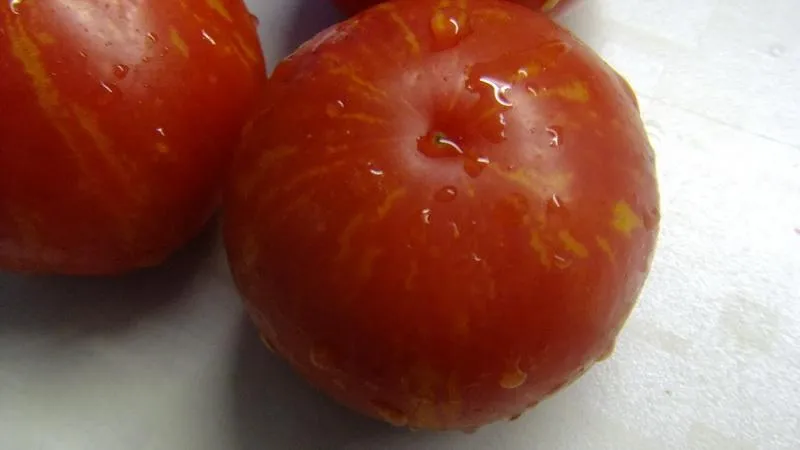
Harlequin is a mid-season short-stem variety. Minimal pruning needed. Bush height: 60–75 cm.
Fruiting begins 110–115 days after germination. Fruits are flattened, striped (red-yellow), with tough skin that resists cracking. Weight: 200–300 g.
High yield: 5–6 fruits per cluster, ripening almost simultaneously.
Care mirrors other short-stem varieties. Water regularly but moderately. Fertilize with chicken manure, compost, or manure solutions.
Short-Stem Tomatoes for Open Soil
Top open-field varieties include Watercolor, Golden Stream, Red Fang, Supermodel, and El Dorado.
Watercolor
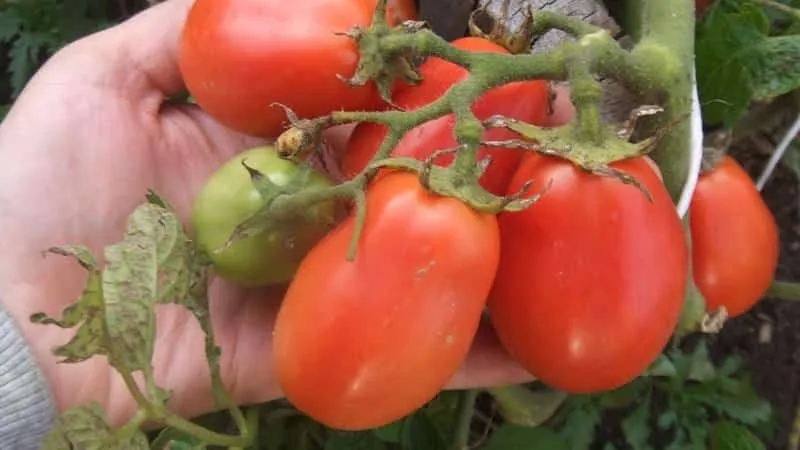
This variety boasts a sturdy 50 cm stem. Staking is optional, but supporting heavy clusters prevents ground contact and rot.
Adapts to varied climates with reliable yields. Each branch produces 6 uniform, slightly elongated fruits (60–100 g). Yields: 6–9 kg/m². Sweet, dense flesh.
A unique trait: yellowish spots near the stem.
Stores well for up to a month. Perfect for canning – small, vibrant tomatoes look stunning in jars.
Transplant in May at 3–4 plants/m². Prefers full sun and weekly watering (settled, 20°C water). Fertilize regularly.
Golden Stream
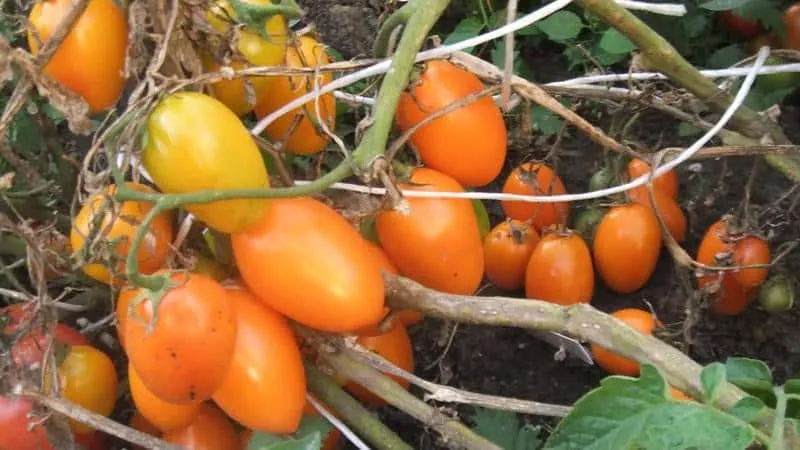
Golden Stream stands out with cascading gold oval fruits (80 g). Sweet, firm flesh. Few seeds (4–6 faint chambers). High dry matter (6%) and sugar (4.5–5%) content.
Rich in beta-carotene (converts to vitamin A), making it a dietary staple.
Ultra-early (82–86 days), ripening uniformly. Versatile for all uses. Resists temperature swings and diseases. Yield: 8–10 kg/m².
Main pest: Colorado potato beetle. Treat with insecticides as needed.
Red Fang
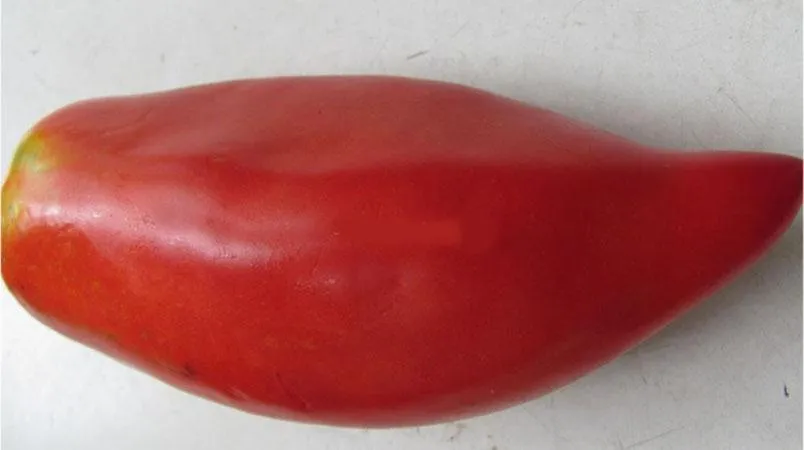
Compact bushes (80–90 cm) need no pruning. Occasional staking prevents toppling.
Elongated, tapered red fruits resemble fangs. Classic tomato flavor and aroma.
Thick skin prevents cracking and extends shelf life. Travels well and ripens off-vine.
Ideal for canning (attractive in jars) or fresh in salads, soups, and sauces.
Sow 50–60 days before transplanting. No unique germination requirements. Plant in full sun.
Supermodel
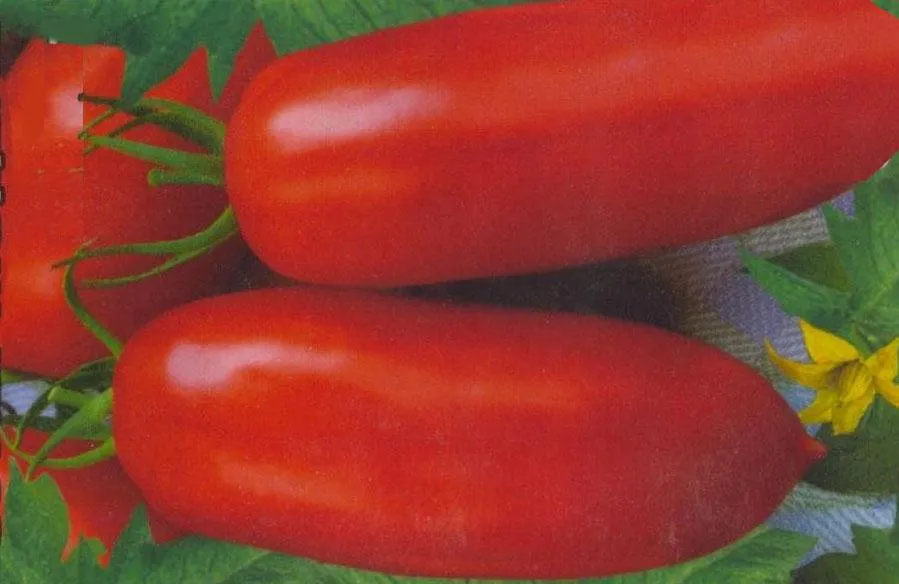
Early variety (100–120 days). Determinate bushes (60–80 cm) require shaping and staking.
Slender fruits (10–15 cm, 120 g) are deep pink with thin, smooth skin. Flesh is dense with 2–3 seed chambers.
Hardy against common diseases. Suitable for all regions.
Transplant 60–65-day-old seedlings outdoors in mid-to-late May. First harvest by early July. Stores well post-harvest.
El Dorado
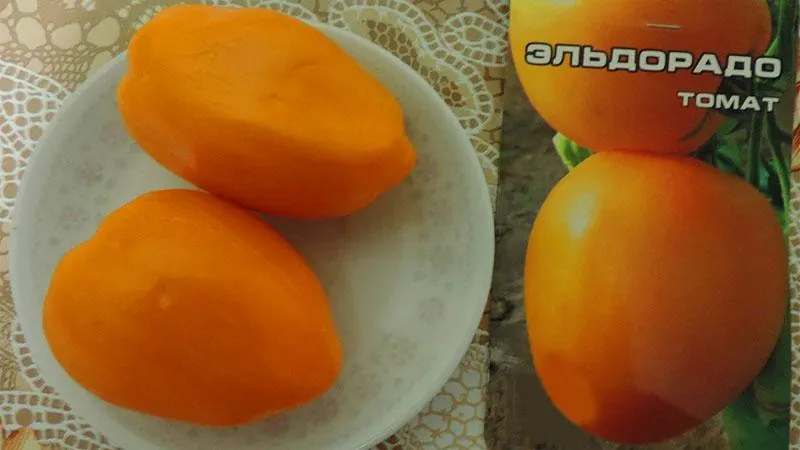
Growth stops after 4–6 clusters (height: 90 cm). Sensitive to temperature swings – best for warmer climates.
Mid-early (110–120 days). High yield: ~5 kg per bush (4–6 clusters of 4–6 fruits, ~300 g each). Prune to 2–3 stems. Requires staking.
Exceptionally sweet, dessert-like flavor. Bright yellow, heart-shaped fruits. Juicy, uniformly yellow flesh.
Tough skin prevents cracking. Stores and transports well. Ripens off-vine. Primarily a salad tomato.
Conclusion
As shown above, short-stem tomatoes vary in taste, appearance, and size but share key traits: early fruiting, compact bushes, easy care, and resilience to weather and disease.
These varieties minimize hassle – no excessive pruning, staking, or pest control – while delivering abundant, early harvests.







